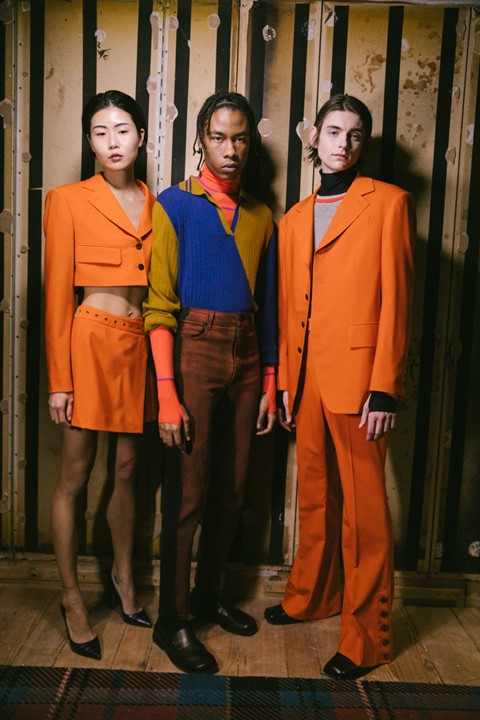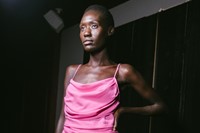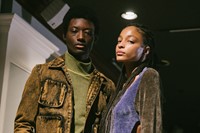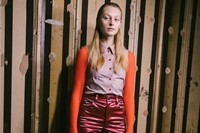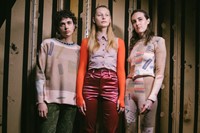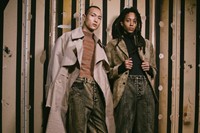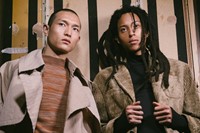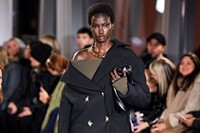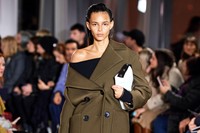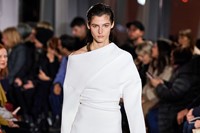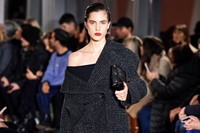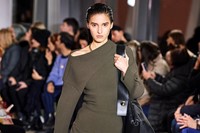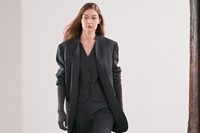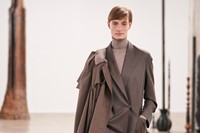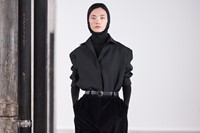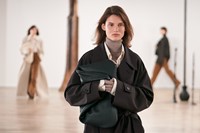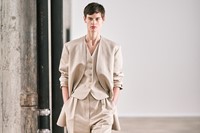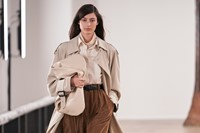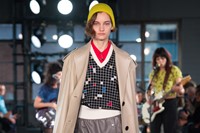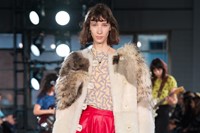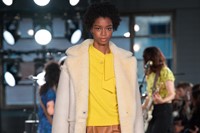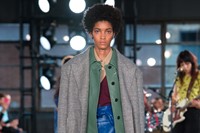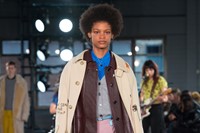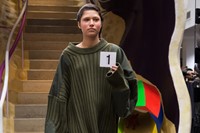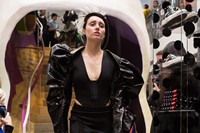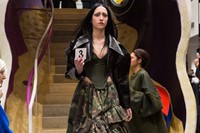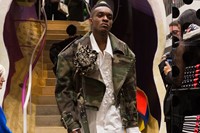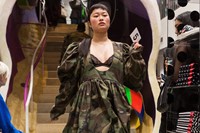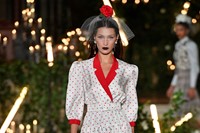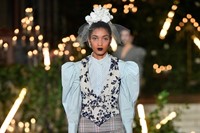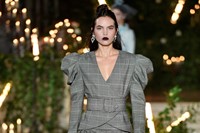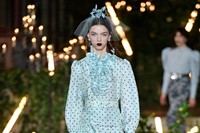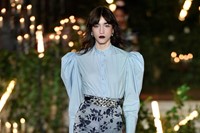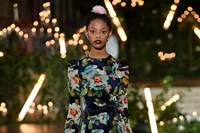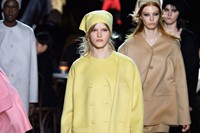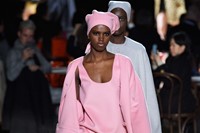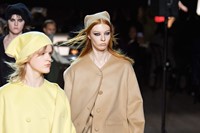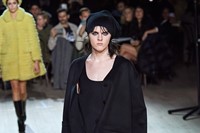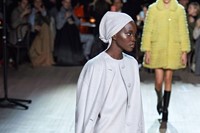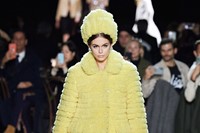All the moments that mattered from the shows in New York this week
Eckhaus Latta
“What are we doing here? Why are we making any of this?” were some of the questions Zoe Latta said she and Mike Eckhaus were mulling over while designing their most recent collection, shown on Tuesday evening. An answer was found in the idea of creating clothes which could be used again and again – much like the shoes, which were vintage Prada, Chanel, Gucci, and others, sourced from The RealReal and would be sold again after the show. In the clothing, it meant that Eckhaus Latta’s nonconformist spirit found new polish – boxy tailoring felt grown up, so too enveloping trench and overcoats, a new addition (though signature homespun elements – acid and raw-edged denim, skewed knitwear, washed-out prints and the like) remained.
Proenza Schouler
Proenza Schouler’s collection began with a blanket designers Jack McCollough and Lazaro Hernandez had gifted their stylist, Camilla Nickerson, the previous Christmas. She had started wearing it as a scarf: the duo were intrigued by its repurposing, its suggestion of both softness and protection. The idea of improvisation ran throughout: garments had the appearance that they had been thrown on in a hurry, slipping off the shoulder or askew at the seams. Dresses – mostly knee-length – twisted around the body, exposing narrow slices of skin. It made for a collection which hit an unexpected sweet spot, managing to be both sexy and reassuring at once.
The Row
An assured collection from Mary Kate and Ashley Olsen at The Row proved why the label is still going – and, indeed, expanding – from their first show at New York Fashion Week, ten years ago. Held amid an installation by the late sculptor Beverly Pepper, it was an efficient proposition for an Autumn wardrobe in its entirety, whether unstructured suiting, in typically muted shades of grey, navy, and beige, or billowing knit sweaters and cardigans (worn with strange and seductive arm-length cashmere gloves). A white column gown, towards the end of the collection, was almost monastic in its purity – an option for The Row bride, perhaps?
Coach 1941
Much of the talk around Coach 1941’s Autumn/Winter 2020 collection was to do with the appearance from New York legend, Debbie Harry, who performed with garage-punk band The Coathangers at the end of the show. It was part of what Stuart Vevers called his ode to “a downtown New York art scene, circa 1981”, which also included a collaboration with the estate of Jean-Michel Basquiat (the artist’s niece, Jessica Kelly, walked in the show). Basquiat’s recognisable cursive and symbolic crown decorated outerwear, sweaters, scarves and a series of playfully shaped handbags, in a collection which evoked the colour, creativity and eclectism of below-14th-street 1980s New York.
Vaquera
In lieu of a traditional on-schedule show, New York-based design trio Vaquera instead held a surprise happening in the New York outpost of Adrian Joffe and Rei Kawakubo’s Dover Street Market (who stepped in at the last minute, fairy godmother-style). Befitting the location, the designers playfully riffed on the department-store runway shows of old – styled by Dazed's fashion director Emma Wyman, models each held a card with their look number – and showed what was perhaps their most accomplished collection yet. All the Vaquera hallmarks were there – body-swamping knitwear, blown-up prairie ruffles and pussybows, irreverant slogan tees (on one, ‘Vaquera’ was crossed out with a red circle, like a warning road sign) – though this time, an evening-time glamour pervaded with a series of black, sequinned trousers, and various plays on the tuxedo, including a frilly, bow-tie wearing pair of underwear.
Rodarte
Rodarte’s latest show was held in held in the nave of St. Bartholomew’s church, on New York’s Upper East Side, though the inspiration was altogether more sacrilegious: the vampire. Which wasn’t – despite a vampiric smudge of purple lipstick – quite as dark, nor as gothic, as it might sound. Instead, it was a riff on Francis Ford Coppola’s Dracula, and its richly romantic costumes: think puff sleeves, frills, intricate flower and bead embroideries, jacquards, and a final series of diaphanous floral-print silk dresses, some accessorised with blooming garlands of real flowers.
Marc Jacobs
You can trust Marc Jacobs to round out the week with a flourish. Dancers, choreographed by Karole Armitage – the ‘punk ballerina’, who rose to prominence in the 1980s – backgrounded a collection that was inspired by the “beauty, promise, sparkle and grit” of a fading New York. In practice, this meant a transporting leap between eras: colourful swing coats and shift dresses in neon and candy shades conjured the 1950s and 1960s of the American socialite – Jacqueline Kennedy Onassis, Babe Paley – while simple sweaters, Peter Pan collar shirts, bra-tops and mini skirts, cut with clean lines, shot it forward to the beginnings of Jacobs’ own label, and the birth of minimalism. It was New York’s best show: not simply an elegy for times lost, but the imagination to see what – by looking backwards and forwards at once – could still be left to gain.
